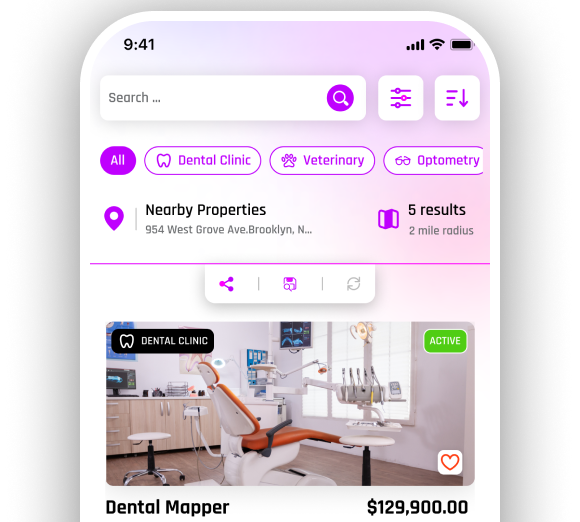Common Pitfalls in Dental Practice Partnerships (and How to Avoid Them)

Forming a dental practice partnership might seem like a dream come true—shared workload, increased revenue potential, and the excitement of building something meaningful with a like-minded professional. But behind the promise lies a complex web of potential pitfalls that can turn even the best-intentioned alliances into stressful, expensive mistakes.
Every year, countless partnerships dissolve not because of clinical skill or patient care issues, but due to mismatched goals, unclear expectations, and legal oversights. These are problems that could have been avoided with proper planning and open communication from the start.
A successful partnership requires more than trust and good rapport. It demands clear agreements, aligned visions, and shared responsibilities—along with a solid legal and financial framework. If you’re exploring this path, understanding the most common partnership mistakes can be your best insurance policy. Let’s break down what can go wrong—and how to ensure your dental partnership thrives instead of fails.
5 Key Issues Why Dental Partnerships Fail
Dental practice partnerships can offer shared responsibilities, financial support, and long-term growth. However, many dissolve prematurely because of the following mistakes:
1. Misaligned Vision and Values
One of the most common causes of conflict is differing long-term goals. One partner may want to expand into multiple locations, while the other prefers to maintain a smaller boutique model. These mismatches can breed tension and stall progress.
How to Avoid It: Discuss your professional values, growth expectations, and lifestyle goals before forming a partnership. Create a written agreement that outlines your shared vision.
2. Poor Communication
Communication breakdowns can lead to assumptions, misunderstandings, and resentment. If roles, responsibilities, or expectations aren't clearly communicated, problems will eventually surface.
How to Avoid It: Establish a routine communication schedule, such as weekly meetings, and document key discussions. Use communication tools and workflows to stay on the same page.
3. Unequal Workload or Contribution
Disparity in clinical hours, patient load, or administrative duties can cause friction. One partner may feel they’re pulling more weight without adequate recognition or compensation.
How to Avoid It: Agree on work schedules and role responsibilities up front. Review performance metrics regularly to ensure balance and fairness.
4. Vague or Incomplete Partnership Agreements
A handshake or verbal agreement isn’t enough. Without a detailed legal agreement, disagreements about buy-ins, compensation, decision-making power, and exit plans can escalate into legal disputes.
How to Avoid It: Work with a legal advisor familiar with dental partnerships. Your agreement should address ownership percentages, dispute resolution procedures, practice valuation methods, and exit strategies.
5. Ignoring Financial Transparency
When finances aren’t shared openly, trust erodes quickly. Discrepancies in revenue distribution, overhead allocation, or spending decisions can lead to resentment and legal conflicts.
How to Avoid It: Set up a shared accounting system and regularly review financial reports together. Ensure transparency in all financial matters.
5 Proven Strategies to Prevent Partnership Failures
Avoiding these common mistakes starts with proactive planning and intentional decision-making. Here’s how to strengthen your dental partnership from the outset:
Define Roles and Responsibilities
Clarity reduces conflict. Determine who will manage hiring, equipment purchases, marketing, insurance claims, and staff issues. Even if roles are shared, define who has the final say on critical decisions.
This is especially important in multi-specialty practices, where duties may vary depending on areas of expertise.
Create an Exit Strategy—Before You Need One
While it might feel premature to talk about parting ways, having an exit strategy in place is crucial. Life happens—partners may relocate, retire early, or have personal emergencies. Without a plan, dissolving the partnership can be costly and complicated.
Include specifics like:
-
Buy-sell agreement terms
-
Practice valuation method
-
Non-compete clauses
-
Timeframes for withdrawal
Conduct a Thorough Financial Audit
Before entering a partnership, conduct due diligence. Request and review tax returns, profit/loss statements, balance sheets, and accounts receivable reports. You should know exactly what you’re walking into.
If you’re buying into an existing dental practice for sale, ensure the practice is financially healthy, with a solid patient base, consistent revenue, and updated technology.
Consider Practice Financing Early
Partnerships often involve practice buy-ins, real estate investments, or equipment upgrades. Explore practice financing options early to understand how each partner will contribute financially.
Dental-specific lenders often offer flexible loans that are structured around partnership transitions. Aligning financing expectations helps avoid conflict down the road.
Bring in a Professional Mediator or Consultant
Even the best partnerships benefit from third-party guidance. Consultants can help with communication strategies, practice valuation, legal structuring, and strategic growth. Periodic check-ins with a professional can prevent problems before they start.
According to the ADA, practices with clear partnership agreements and regular strategic planning are 40% more likely to avoid legal or operational disputes compared to those without.
Navigating Your First Partnership? Use Technology to Your Advantage
Digital tools can play a big role in fostering partnership success. Consider using cloud-based systems for:
-
Shared scheduling
-
Digital accounting
-
Internal communication
-
Task management
If you’re in the market for a medical office for sale or transitioning into partnership, platforms like the PracticeFinder App can simplify the process. From listing reputable practices to connecting with brokers and financing solutions, the app is designed to streamline transitions and minimize friction between partners.
The Right Partnership Can Multiply Success
When done right, dental partnerships can offer huge advantages—shared overhead, work-life balance, a larger patient base, and the ability to grow faster. But success isn’t automatic.
Avoiding the pitfalls starts with understanding what typically goes wrong and putting systems in place to prevent it. Whether you’re considering a private practice for sale, forming a new practice, or restructuring an existing one, clarity, transparency, and aligned values are non-negotiable.
Build Smarter, Not Just Bigger
The strength of your dental practice partnership will shape not only your business success but also your personal well-being and professional satisfaction.
Don't underestimate the power of proactive planning. Taking the time to build a solid foundation will save you countless hours—and dollars—in the long run.
Ready to form or buy into a dental partnership that lasts?
Use the PracticeFinder App to browse opportunities, compare valuations, and connect with vetted brokers today.
Start your smarter dental business journey now.

